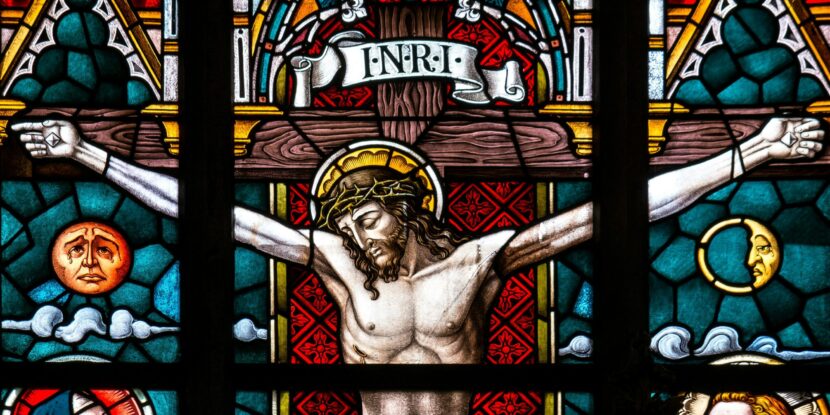Good Friday, the sixth day of Holy Week, brought the bitter fruit of Judas’s betrayal. Following his arrest in the Garden of Gethsemane, dragged before priests and rulers, and enduring the Cross to fulfill His mission, Jesus faced a whirlwind of trials, mockery, and torment.
First, Jesus was hauled before Caiaphas, the high priest, for what amounted to a show trial. Silent before His accusers, Jesus spoke only when Caiaphas demanded, “I adjure thee by the living God, that thou tell us whether thou be the Christ, the Son of God.”
“Thou hast said,” Jesus replied, “nevertheless I say unto you, Hereafter shall ye see the Son of man sitting on the right hand of power, and coming in the clouds of heaven”—a clear declaration, as Caiphas and the priests saw it, of His divinity.
Enraged, Caiaphas rent his robes, crying, “He hath spoken blasphemy; what further need have we of witnesses?” The priests set their minds on His execution, but they lacked the authority to pass the sentence themselves.
PILATE AND HEROD.
Caiaphas first turned Jesus over to Pontius Pilate, the Roman governor. The priests branded Jesus a rebel, claiming He declared Himself king, and called for a death sentence. But Jesus told the Roman, “My kingdom is not of this world.” An uneasy Pilate attempted to pass the decision on to the Romans’ client king, Herod Antipas, hoping to sidestep the situation.
Herod—son of the bloodthirsty Herod the Great—was thrilled to meet the famed preacher at first when He was brought before him, but lost interest when Jesus maintained the same silence He had kept at his trial before Caiaphas. Herod only mocked Him, draping Him in a kingly robe and returning Him to Pilate, no more keen to pass a sentence of death than the governor had been.
Hoping to placate the temple leaders, Pilate had Jesus scourged, with his soldiers pressing a crown of thorns on His head to mock His kingship. But Caiphas would not relent. Finally, Pilate offered a choice—he would pardon one criminal in a special act of clemency, either Jesus or Barabbas, a notorious robber and murderer. Even then, the priests preferred to put Jesus to death, and spare the killer.
“I am innocent of the blood of this just person: see ye to it,” Pilate proclaimed, washing his hands of the matter. Yet he still yielded to Caiphas and the mob in sentencing Jesus to crucifixion.
THE PLACE OF THE SKULL.
Jesus, already weakened by his scourging, was forced to carry His cross to Golgotha, the Place of the Skull—albeit with some help from St. Simon of Cyrene.
Arriving, the Roman soldiers nailed Him to the Cross, affixing a sign in Hebrew, Greek, and Latin: “JESUS OF NAZARETH, KING OF THE JEWS”—to the priests’ chagrin.
At the cross stood His mother Mary, His aunt, Mary the wife of Cleophas, Mary Magdalene, and the apostle John. Jesus first entrusted His mother to St. John’s care, then prayed for His tormentors, saying, “Father, forgive them; for they know not what they do” (Luke 23:34, KJV).
The priests scoffed: “He saved others; himself he cannot save. If he be the King of Israel, let him now come down from the cross, and we will believe him. He trusted in God; let him deliver him now, if he will have him: for he said, I am the Son of God.”
Jesus cried out, “My God, my God, why hast thou forsaken me?” But He was not lamenting that the Father had abandoned Him, he was quoting Psalm 22, where King David speaks of being forsaken, of having his hands and his feet—like Jesus—pierced through, and keeping his faith regardless.
With a final breath, Jesus declared, “It is finished.” His mission of atonement fulfilled, He commended His spirit to the Father and, at last, “gave up the ghost.”
The reaction was immediate: “Then the veil of the temple was rent in twain from the top to the bottom; and the earth did quake, and the rocks rent,” the Gospels record, describing a terrible earthquake which tore the cloth concealing the Holy of Holies, the innermost sanctuary of the temple where God’s presence was believed to dwell.
Even the Roman centurion and soldiers, trembling, confessed, “Truly this was the Son of God.”
In a rare gesture, Pilate allowed St. Joseph of Arimathea, believed to be Jesus’s uncle, to take His body for burial instead of leaving it for the carrion birds. St. Joseph wrapped Him in linen and laid Him in a tomb sealed with a great stone.
But it would not stay sealed for long.


